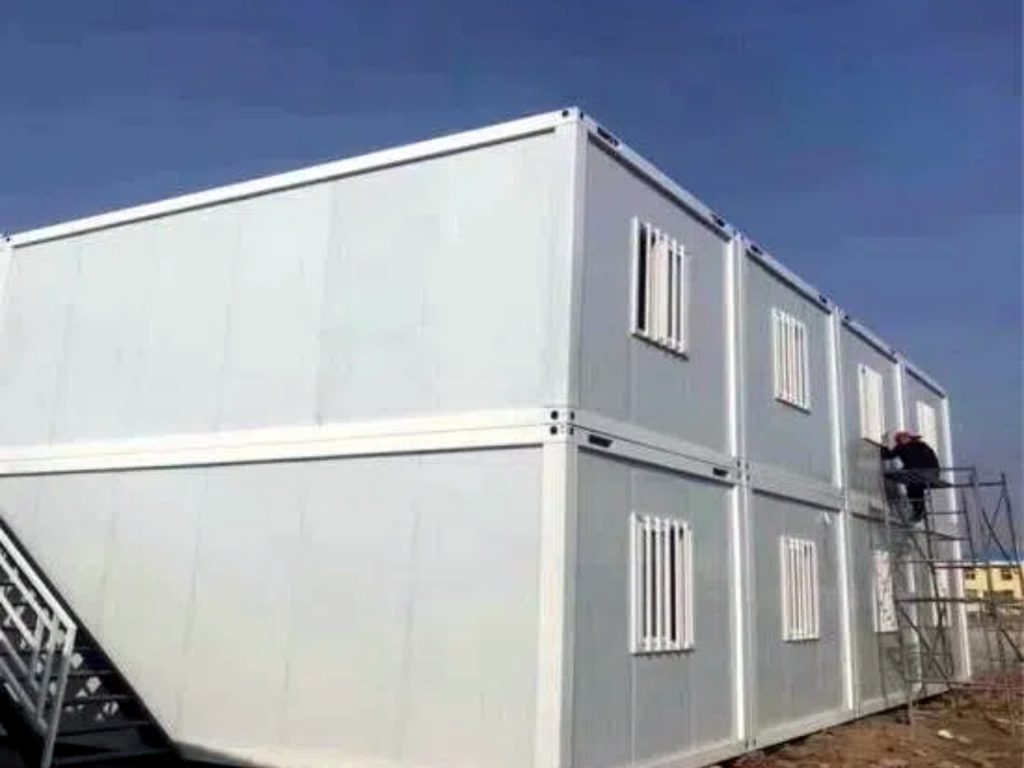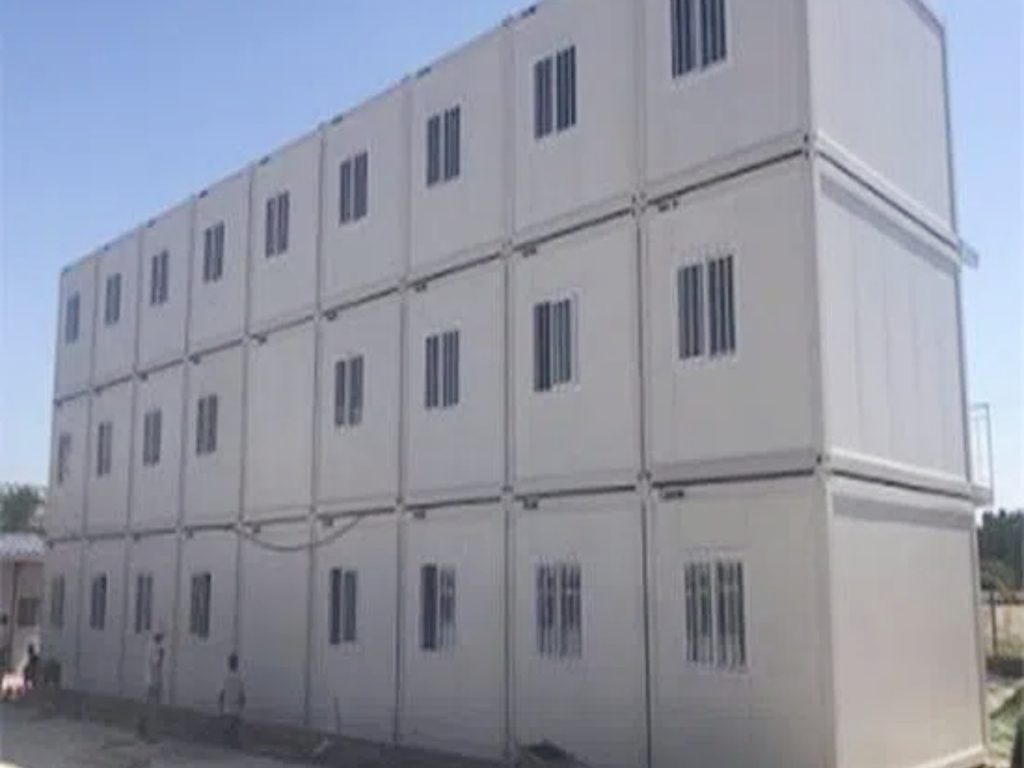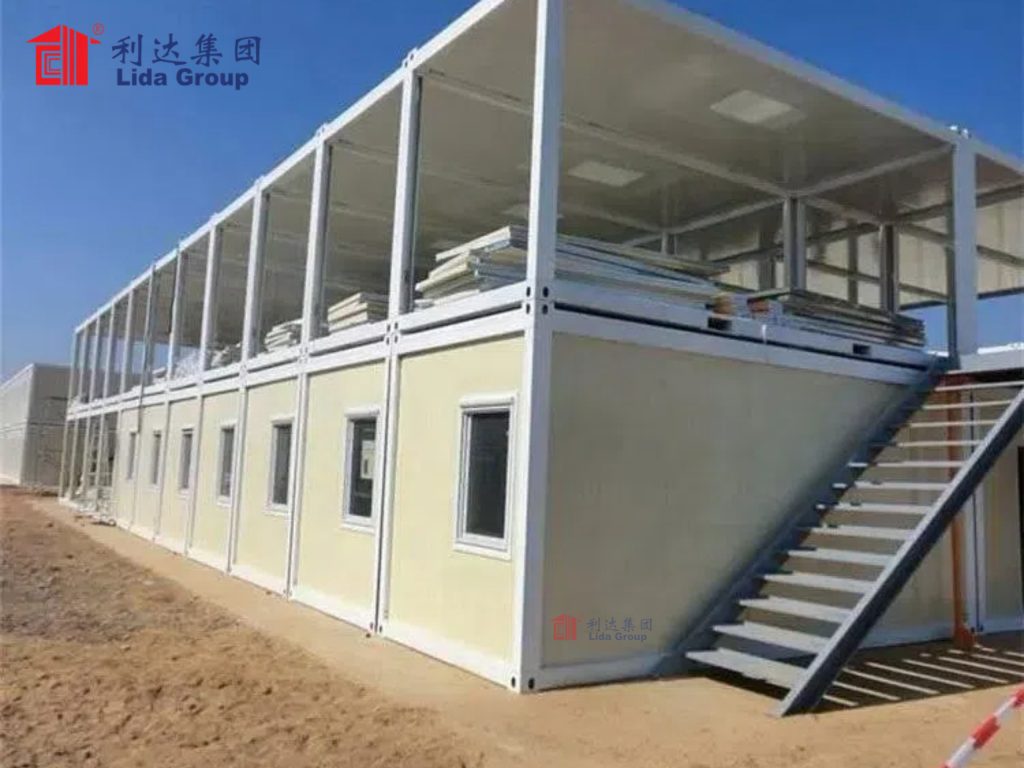**Introduction: Confronting Nature’s Extremes**
The march of human progress often advances into the planet’s most unforgiving territories. From the scorching, sun-blasted deserts of the Middle East and Australia, where temperatures soar past 50°C (122°F), to the frozen, wind-whipped tundras of Siberia and Northern Canada, where mercury plunges below -40°C (-40°F), and the humid, cyclone-prone coastal regions of Southeast Asia—these are the frontiers of modern infrastructure, mining, and energy projects. Housing a skilled workforce in these environments is not merely a logistical challenge; it is a profound engineering problem. Standard accommodations fail catastrophically under such duress, leading to human discomfort, safety hazards, exorbitant maintenance costs, and project delays.
In this realm of extremes, conventional construction methods reveal their vulnerabilities. Traditional buildings crack under thermal expansion and contraction, suffer from catastrophic heat loss or gain, succumb to corrosion from salt and sand, and are vulnerable to high winds and moisture ingress. The solution requires a paradigm shift from *building* shelters to *engineering* habitats. Lida Group has emerged as a global leader by meeting this challenge head-on. Their container-based labor camps are not simply repurposed metal boxes; they are meticulously engineered systems designed from the ground up to offer unparalleled resilience, durability, and safety in the world’s harshest environments. This article delves into the sophisticated engineering and design principles that allow Lida Group’s complexes to not just survive, but to provide safe, comfortable, and reliable havens where they are needed most.

**Chapter 1: The Adversary – Understanding the Environmental Threat Matrix**
To engineer for durability, one must first understand the forces of destruction. Lida’s design process begins with a thorough analysis of the environmental threat matrix specific to a project’s location.
1. **Thermal Extremes:**
* **Extreme Heat:** Prolonged high temperatures cause thermal expansion of materials, UV degradation of surfaces, and immense stress on cooling systems. Without superior insulation, interiors become uninhabitable ovens.
* **Extreme Cold:** Sub-zero temperatures make standard steels brittle, cause plumbing to freeze and burst, and lead to dangerous heat loss. Condensation within wall cavities can freeze, expand, and cause structural damage.
2. **Corrosive Environments:**
* **Coastal/Saline Atmospheres:** Salt-laden air is highly corrosive, rapidly eating away at standard steel frames and fasteners, leading to structural weakening and failure.
* **Desiccant and Abrasive Environments:** Desert sands are highly abrasive, scouring surfaces and damaging mechanical components. They can also infiltrate every opening, degrading air quality and machinery.
3. **High-Wind and Seismic Events:**
* **Cyclones/Hurricanes/Typhoons:** These events generate powerful lateral and uplift forces that can tear roofs off and collapse poorly anchored structures.
* **Seismic Activity:** Earthquakes subject buildings to complex, multidirectional shaking, requiring flexibility and immense tensile strength to prevent collapse.
4. **Precipitation and Moisture:**
* **Heavy Rain and Flooding:** Water ingress leads to rot, mould, electrical shorts, and corrosion.
* **High Humidity:** Promotes mould growth, metal corrosion, and degradation of interior materials.
Lida Group’s engineering strategy is a point-by-point response to this matrix of threats.
**Chapter 2: The Foundation of Resilience – Material Science and Structural Engineering**
The inherent durability of a shipping container—designed to withstand the brutal forces of ocean transport—provides an excellent starting point. Lida enhances this base durability through advanced material science and structural reinforcement.
**2.1. Advanced Material Selection:**
* **COR-TEN Steel (Weathering Steel):** Lida primarily uses new COR-TEN steel containers or fabricates modules from it. This alloy forms a stable, rust-like appearance when exposed to weather, but unlike normal rust, this patina adheres to the metal and acts as a protective barrier, drastically slowing the rate of further corrosion. This is invaluable in coastal and humid environments.
* **Hot-Dip Galvanization:** For all structural steel components, including frames and, crucially, the inter-module connection systems, hot-dip galvanization is employed. This process involves coating steel in a layer of zinc, providing sacrificial anode protection against corrosion that lasts for decades.
* **Specialized Protective Coatings:** All exterior surfaces are treated with multi-stage coating systems. This typically includes a primer, an epoxy intermediate coat, and a polyurethane topcoat specifically formulated for high UV resistance. This system protects against abrasion from sand and salt and reflects solar radiation, reducing heat absorption.
**2.2. Structural Reinforcement for Stacking and Loading:**
A multi-story camp must withstand its own weight and environmental loads.
* **Corner Post Reinforcement:** The corner posts of the containers, which bear the vertical load when stacked, are often reinforced with thicker steel plates or additional internal steel members to handle the dynamic loads of high winds or seismic activity.
* **Integrated Structural Frames:** For projects in high seismic zones or requiring very high wind ratings, Lida designs a secondary structural steel frame that integrates the container modules into a monolithic, incredibly robust structure. This frame absorbs and distributes forces, preventing stress concentration on any single module.

**Chapter 3: Fortifying the Envelope – The Building Science of Protection**
The building envelope is the primary barrier between the occupants and the elements. Lida’s engineering of this envelope is where its superiority in harsh environments is most evident.
**3.1. Superior Multi-Layer Insulation System:**
Thermal performance is a matter of safety, not just comfort.
* **High-Density Insulation:** Walls, roofs, and floors are filled with non-combustible, high-density rock wool or closed-cell polyurethane foam (PUR/PIR) with exceptional R-values. This creates a formidable thermal barrier, maintaining interior temperatures with minimal energy input.
* **Elimination of Thermal Bridging:** This is a critical differentiator. The steel frame of a container is a natural thermal bridge, conducting outside temperatures directly inside. Lida’s system incorporates **thermal breaks**—strips of low-conductivity material—within the wall assembly to separate the internal and external steel surfaces, preventing condensation and drastically improving thermal efficiency.
* **Vapor Barriers:** In cold climates, a continuous vapor barrier is installed on the warm side of the insulation to prevent moist interior air from migrating into the wall cavity, where it would condense and cause mould or ice damage.
**3.2. Airtight Sealing and High-Performance Glazing:**
* **Advanced Sealing:** All joints between panels, around windows, and at module connections are sealed with high-grade, flexible silicone or EPDM gaskets designed to remain pliable across a wide temperature range (-60°C to +150°C). This creates an airtight seal, preventing dust, sand, and moisture infiltration.
* **Laminated Insulating Glass Units (IGUs):** Windows are not a weak point. Lida uses double-glazed, argon-filled units with a low-emissivity (Low-E) coating. In extreme environments, **laminated glass** is often specified. This features a polyvinyl butyral (PVB) interlayer that holds the glass together if shattered, providing protection from high-wind debris and enhanced security.
**Chapter 4: Engineered for Specific Environmental Threats**
Lida’s designs are not one-size-fits-all; they are tailored to the specific extreme.
**4.1. For Desert and Arid Environments:**
* **Enhanced Sand and Dust Protection:** All ventilation intakes are fitted with high-grade, high-capacity particulate filters. Doors are equipped with double seals. Positive air pressure can be maintained inside units to force air out through any small gaps, preventing dust ingress.
* **Solar Reflective Exteriors:** Light-colored, highly reflective roof and wall coatings are used to minimize solar heat gain, significantly reducing the cooling load on air conditioning systems.
* **HVAC Robustness:** Air conditioning systems are specified with oversized condensers and compressors designed to operate efficiently at extreme ambient temperatures, ensuring reliability when it is needed most.
**4.2. For Arctic and Polar Environments:**
* **Arctic-Grade Insulation:** Insulation thickness is significantly increased, often exceeding 150mm, to achieve ultra-high R-values and prevent heat loss.
* **Heated Plumbing Systems:** All water and sewage lines are trace-heated (wrapped with heating cables) and heavily insulated to prevent freezing. Pipes are run within the insulated envelope of the building, not in exposed cavities.
* **Snow Load Calculations:** Roof structures are engineered to support heavy snow accumulation loads, often exceeding local building code requirements. Sloped roofs are designed to facilitate snow shedding.
* **Entrance Airlocks:** Double-door entrance vestibules (airlocks) are standard to prevent massive heat loss every time a door is opened.
**4.3. For Coastal and Tropical Cyclone Regions:**
* **Corrosion Protection Overdrive:** The material and coating specifications mentioned in Chapter 2 are paramount here. Stainless steel fasteners and fittings are often used throughout.
* **Wind-Rated Engineering:** The entire complex, from its foundational connections to its roof, is engineered to specific wind speed ratings (e.g., Cyclone Category 4 or 5). This involves:
* **Helical Pile Foundations:** Instead of concrete footings, steel piles screwed deep into the ground provide incredible tensile strength to resist uplift forces.
* **Redundant Connection Systems:** Modules are connected to each other and to the foundation with a system of heavy-duty, structural-grade steel twist locks and bolted brackets that create a rigid, unified structure.
* **Impact-Resistant Glazing:** As mentioned, laminated glass is crucial to withstand flying debris.
**4.4. For Seismic Zones:**
* **Base Isolation and Flexible Connections:** In some high-risk areas, the entire complex can be mounted on base isolators—devices that decouple the building from ground motion, absorbing and dissipating seismic energy. Inter-module connections are designed to have a degree of flexibility, allowing the structure to sway as a cohesive unit without fracturing.

**Chapter 5: Integrated Systems for Autonomous Operation**
Durability also pertains to the functionality of the camp’s vital systems.
* **Robust MEP (Mechanical, Electrical, Plumbing):** All systems are designed for harsh conditions. Electrical conduits are sealed, panels are corrosion-resistant, and wiring is rated for temperature extremes. Water tanks and major components are housed within insulated and protected utility modules.
* **Backup Power Generation:** Redundancy is key. Integrated backup generator systems ensure continuity of power for life safety and HVAC systems during primary power outages, which are common in remote and extreme locations.
**Conclusion: Redefining Resilience in Remote Accommodation**
Lida Group’s approach to designing and building container labor camps for extreme conditions represents the pinnacle of applied engineering in the service of human necessity. They have successfully moved the conversation from mere shelter to guaranteed survivability and comfort. By leveraging advanced material science, structural engineering principles, and a deep understanding of building physics, Lida creates environments that are actively hostile to the external forces arrayed against them.
The result is a product that offers unparalleled value and safety. For project managers, it translates into **uninterrupted operations**, as the workforce remains secure, healthy, and on-site. It means **dramatically lower lifetime costs** through reduced maintenance, repair, and energy consumption. It ensures **regulatory compliance** and duty-of-care obligations are not just met but exceeded. Most importantly, for the workers themselves, it provides the profound psychological security of knowing they are protected by the most robust technology available—a safe haven that allows them to perform their demanding jobs effectively and return home safely.
Lida Group has thus established a new global benchmark for durability in prefabricated construction. They have proven that through intelligent engineering, it is possible to create communities that stand as resilient, durable, and comfortable outposts of human ingenuity, capable of thriving in the face of the Earth’s most formidable challenges. Their work is a testament to the principle that where we work should not dictate how well we live.

Related news
-
Transforming Remote Site Living: Lida Group's Prefab Container Building Systems Offer Unmatched Labor Camp Comfort
2025-09-17 16:36:13
-
Lida Group's Advanced Engineering Ensures Rapid Assembly of High-Quality Container House Complexes for Labor Camps
2025-09-17 15:53:24
-
Why Major Infrastructure Projects Choose Lida Group's Prefab Container Building Systems for Durable Labor Camp Solutions
2025-09-16 16:01:13
contact us
- Tel: +86-532-88966982
- Whatsapp: +86-13793209022
- E-mail: sales@lidajituan.com


